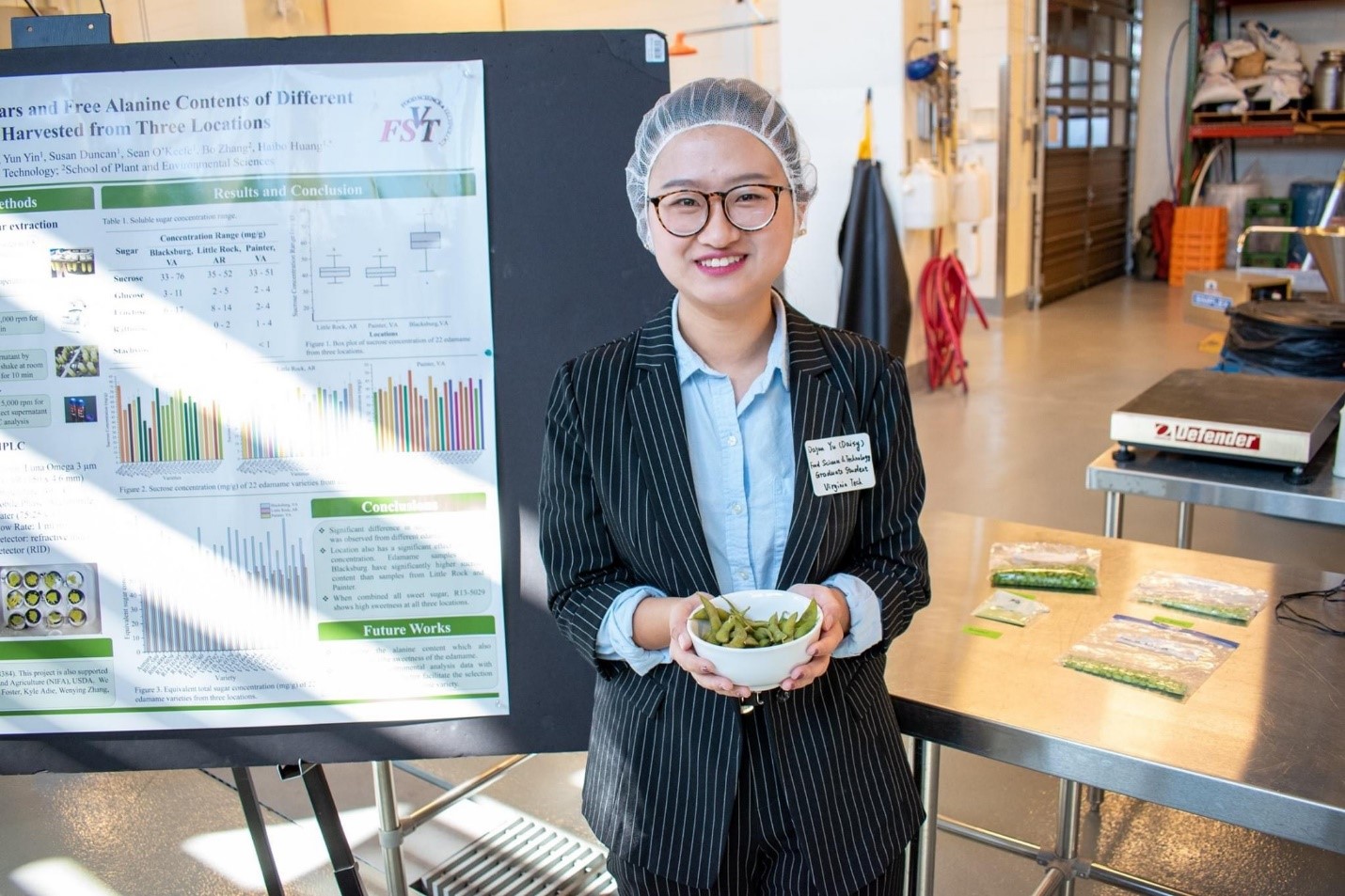An interdisciplinary study on facilitating breeding edamame suited for growing in the US using instrumental analysis

By Dajun Yu, Ph.D. student of Water INTERface IGEP, Department of Food Science and Technology; Advisor: Haibo Huang
Edamame, also called vegetable soybean, has a long history in the Asian diet as a snack or side dish. Its increased popularity in the US is due to high nutritional values. Edamame contains complete protein, polyunsaturated fatty acids, vitamins C, E, minerals, and other active compounds, so some researchers reported that edamame has potential health benefits to help prevent many diseases, such as cardiovascular disease, cancer, or osteoporosis. However, the current edamame market of the US mainly depends on importation because the US does not have edamame genotypes that best suited for growing domestically. Therefore, selecting and breeding the best US genotype is the primary task to promote and boost domestic edamame production.
Except for the data collected in the edamame field, sweetness is one of the most important eating qualities of edamame and chemical compositions (protein, fat, fiber and so on) are related to the nutritional values. Therefore, in our study, we determined and compared the sweetness and chemical compositions of edamame with different genes (genotypes) and planted in different locations – Blacksburg VA, Little Rock AR, and Painter VA. The results showed that both planting and genotypes affected the sweetness and chemical compositions. Edamame grown in Blacksburg VA has the highest sugar (sucrose, fructose, glucose) contents which means they are sweetest, followed by samples from Little Rock AR and Painter VA. In Blacksburg, V13-0339 is the sweetest one while R13-5029 is the sweetest one in Little Rock AR and Painter VA. For chemical compositions, edamame samples from Little Rock AR had the highest fiber content and samples from Painter VA had the highest protein and fat contents. In Painter VA, V10-3653 had the highest protein and fat content. V13-1644 had the highest fiber content in Little Rock AR. Our research shows that both edamame types and the planting locations affect the protein, fat, and sugar content of the edamame that people eat. Breeders can choose edamame with higher sugar or higher protein and fiber content to meet consumer’s preference.


